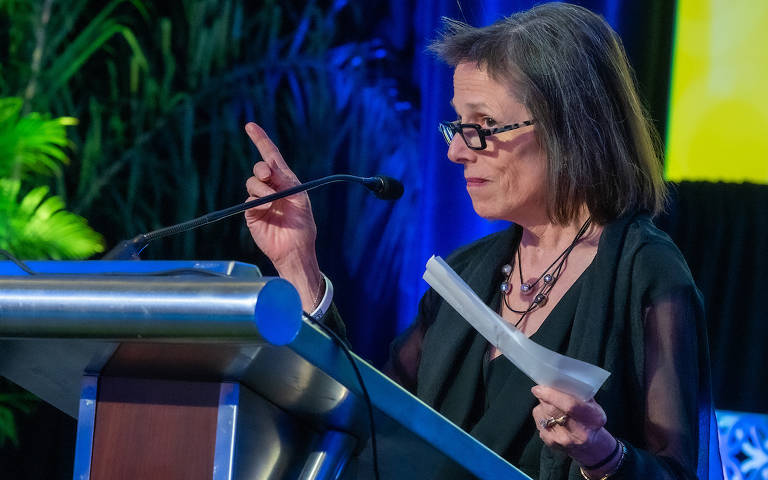The Russian playwright and physician Anton Chekhov once said, “You must trust and believe in people or life becomes impossible.” In healthcare — for medical professionals and patients alike — this rings especially true in challenging times plagued by divisiveness and uncertainty.
Radiology has stared down adversity in the past and has overcome daunting threats through innovation, strategic collaboration, and a staunch refusal to accept the status quo. Radiologists are smart people, and I believe we can meet today’s challenges and exceed even higher standards of excellence by working together for positive change. Perpetuation of a “who is right and who is wrong” mentality will not move us toward the future that we want or provide the care our patients need, expect and deserve … they trust us.
Realizing that setting aside personal differences to advance the collective good makes good sense. This has been ACR’s messaging for many years, while striving to listen and respond to members’ needs. It can be a balancing act, but the future waits for no one. The College has been a rolling stone since recovering from the pandemic — accelerating efforts around health equity, population health, reimbursement, emerging technologies, rising work volumes and a strained workforce in search of solutions.
I am confident the College can empower members to put solutions in play and silence the naysayers who insist obstacles to success are insurmountable.
During my term as BOC Chair, we celebrated the ACR’s 100th year — a fitting milestone embodying the far-reaching value the College brings to members. This includes a multitude of regulatory victories to protect and empower members, new resources to facilitate the use of AI in clinical practice, the extension of data registries to ensure quality and safety, and significant progress in screening outreach and outcomes.
We will continue to engage stakeholders exploring radiology’s role in promoting environmental sustainability. In addition, we have partnered with anesthesiologists and emergency physicians on the No Surprises Act, contributed groundbreaking health policy research, and strengthened member communication and education through our outstanding publications, webinars, and podcasts. Our stated mission, “ACR is the voice of our members, empowering them to serve patients and society by advancing the practice and science of radiological care,” charges us to provide guidance and clinical and operational support for adapting to an ever-changing radiology landscape.
This important work will continue — and new goals will be attained — if we reserve negative judgment of new generations, new ideas and evolving radiology cultures that view talented physicians as more than the number of reads they can churn through.
I envision a future in which radiology has a more diverse workforce, where leaders and colleagues challenge one another through innovative and adaptive contributions. This provides a clear path to better serve patients with equitable care, fosters an open-minded approach to leadership and promotes well-being and professional satisfaction. Emerging technologies will be harnessed to enhance radiologists’ expertise.
Unity of purpose must be our focus. The days of divisive rhetoric that stymies innovation and progress are numbered; our outreach to talented new physicians will be hampered by negative perceptions of our field. After all, there is no shortage of interest in what radiology can be and can do, but plenty of disinterest in a stagnant specialty.
Transparency among the College, its members and potential members is essential. New and existing members need to understand the value that ACR provides them now, as well as our plan to l ensure their success going forward. ACR has a rich track record of doing good for members so they can do good for patients, a reputation built on trust, which should not lie dormant once it is earned. Rather, the two-way street where trust “lives” requires regular maintenance to ensure smooth flow of traffic in both directions.
Within radiology, expectations have shifted, especially post-pandemic. There has been too much isolation, burnout, and workforce and workflow disruption, and not enough of the cohesive teamwork required to further advance our impressive achievements in the field. I’ve witnessed vocal minorities and silent majorities belabor many issues. It behooves our leaders to take a deeper dive into team building and trust building, together with members.
The radiology workforce faces tough challenges — around reimbursement, volume, scope of practice, new technology and a host of other immediate and long-term issues. We should view these challenges as an opportunity to shine. In my experience, nothing accelerates innovation and creative solutions like facing challenge and embracing change. I am confident the College can empower members to put solutions in play and silence naysayers who insist obstacles to success are insurmountable.
While the ACR continues to advocate on behalf of our members, our profession, and our patients, it is imperative to recognize that the greatest threats often come from within. We must avoid turf wars in radiology. If we spend all our time protecting our turf by patrolling the border, we will be left standing alone, in the weeds. Remaining focused while forging forward and working together is the best strategy to solve common problems.
As I reflect upon the last two years, I am reminded of the tenets I laid out in my very first BOC chair column in the ACR Bulletin. Those spoke to my beliefs then (perhaps even more relevant now) that the College and its members can survive and thrive in the face of adversity only through collaborative innovation and coalition-building. The ACR will continue its work to ensure that radiologists remain not only integral, but central to the future of safe, equitable, efficient, effective, and timely patient-centered quality care.

